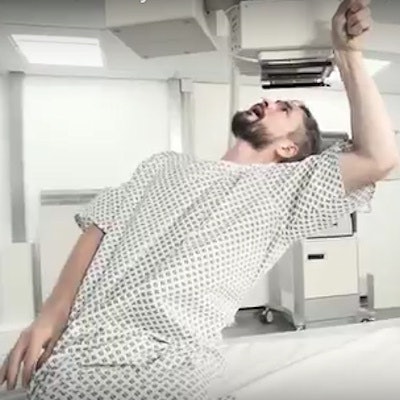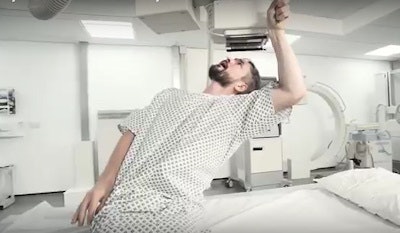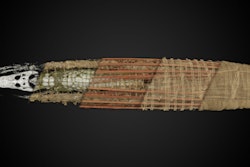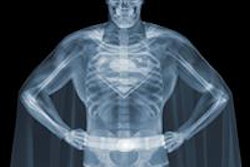
Originally shown as part of World Radiography Day and International Day of Radiology on 8 November, an innovative dance movie called "Unknown Quantity" has thrown radiology into sharper focus as it seeks to explore the dynamic among patients, medics, and machines.
The movie was made to commemorate the 120th anniversary of the first medical x-ray performed by Major John Hall-Edwards in Birmingham, U.K. It was launched on the social media channels of its creator, Birmingham's Hippodrome Creative, and in the foyers of partner venues in Birmingham City University and Birmingham Children's Hospital.
"Art is a great way to raise the profile of radiology amongst the public. However the content of the art and its interpretation will vary greatly from person to person," Jean Cahalane, radiology professional manager at Birmingham Children's Hospital National Health Service Foundation Trust, noted in an email to AuntMinnieEurope.com.
She believes radiology would benefit from more of these nonmedical projects in an effort to engage public interest in the discipline. Such collaborations can help to make radiology less intimidating to patients if the art is presented in a positive light, perhaps focusing on the positive aspects of radiology and the staff that works there, she wrote.
 The dance movie "Unknown Quantity" lasts around eight minutes.
The dance movie "Unknown Quantity" lasts around eight minutes.The movie, which was shown throughout November, incorporated a dance performed by the French-born choreographer and entertainer Mickael "Marso" Riviere, and a soundtrack created by Justin Wiggan that combined body sounds with those of x-ray equipment.
Low- and high-camera angles show Riviere responding to the radiology environment in a patient hospital gown. His dance uses abstract movement and facial expression to mimic machinery and medical procedures, while "Xograms," images depicting the shadows of objects, were digitally fused into the movie. The finished work thus explores the sounds and actions of performing or undergoing x-ray from three distinct perspectives -- that of the patient, operator, and machine.
The first clinical x-ray was performed on the site of Birmingham Children's Hospital, back in 1896 when it was a general hospital, Cahalane explained, adding that the facility now performs over 69,631 pediatric radiology examinations each year in a radiology department comprising over 70 staff, including radiographers, radiologists, radiology support workers, and administrators.
The project took several months of preparation and was filmed at the university. While the movie has had mixed reviews among pediatric staff who felt that some of the scenes may be disturbing or be misinterpreted by children, hospital managers have been happy with its participation in the art project, according to Cahalane. The center was pleased to be a partner in the art project to celebrate advances in x-ray technology, she said.
To view the eight-minute movie on the Birmingham Hippodrome website, click here.



















